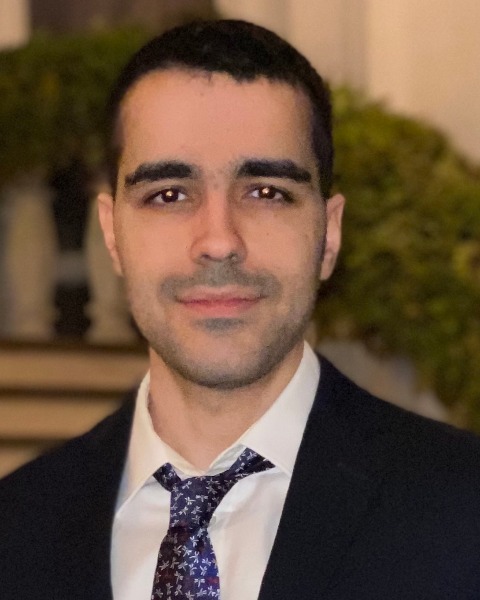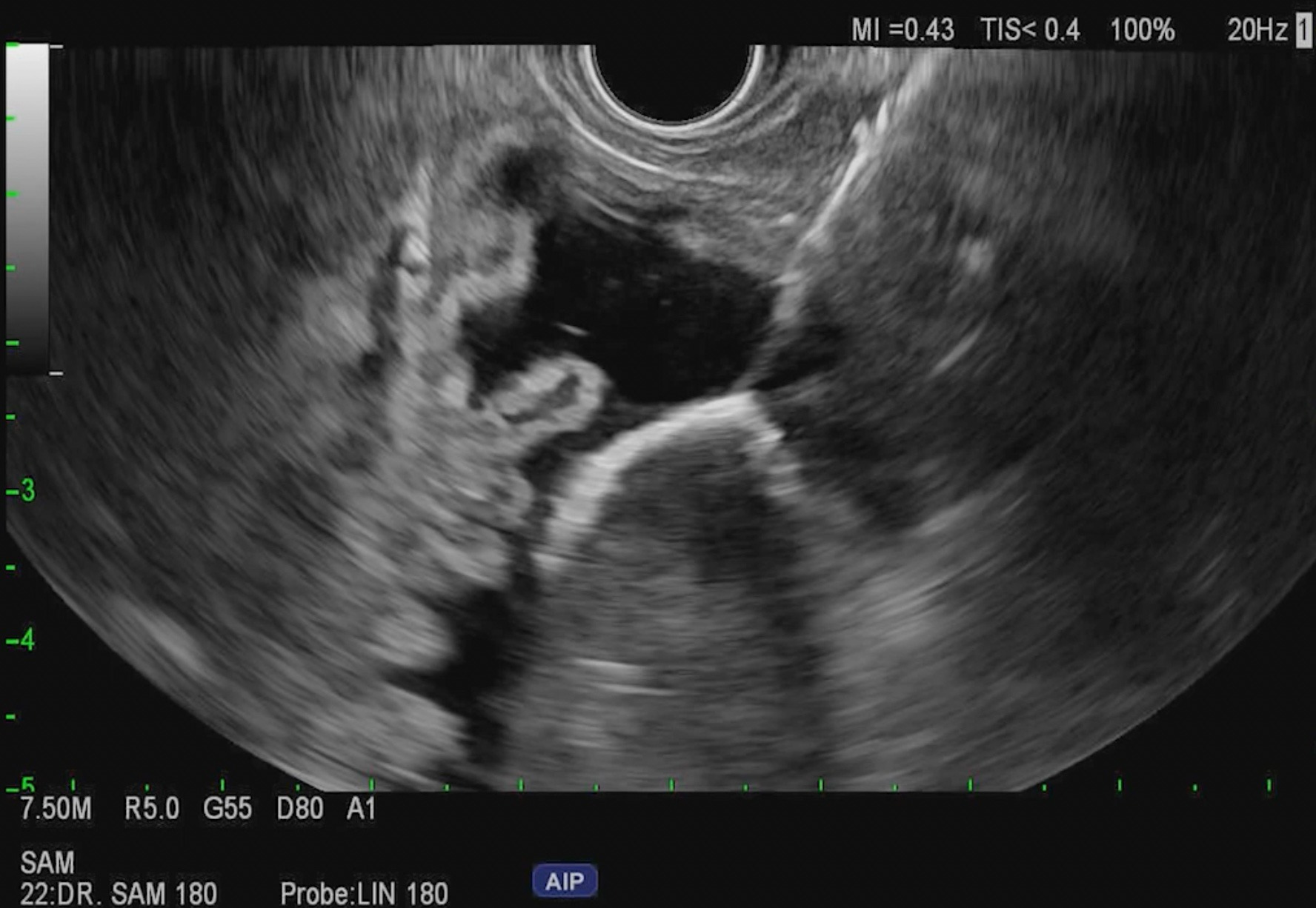Back


Poster Session A - Sunday Afternoon
Category: Interventional Endoscopy
A0434 - Simultaneous Two Scope Method for Placement of Endoscopic Gastrojejunostomy With LAMS
Sunday, October 23, 2022
5:00 PM – 7:00 PM ET
Location: Crown Ballroom

Has Audio

Amirali Tavangar, MD
University of California Irvine
Orange, CA
Presenting Author(s)
Amirali Tavangar, MD1, David Cheung, MD2, Vamsi Vemireddy, MD1, Peter H. Nguyen, MD3, Jason Samarasena, MD, MBA, FACG4
1University of California Irvine, Orange, CA; 2UCI Medical Center, Orange, CA; 3University of California, Irvine, Orange, CA; 4UC Irvine, Orange, CA
Introduction: Lumen-Apposing Metal Stents (LAMS) have been a tremendous advance in the field of Interventional Gastroenterology. Originally designed for pseudocyst/walled-off necrosis drainage, a number of novel indications have emerged for use of these stents. One of the most innovative uses is the creation of a gastro-enteric anastomosis for patients with gastric or duodenal outlet obstruction such as from cancer. This is a case of using two scopes side-by-side simultaneously to place the LAMS and create an endoscopic Gasto-jejunal (GJ) anastomosis.
Case Description/Methods: This is a 51 yo male who presented to hospital with symptoms of nausea and vomiting over 1 week. CT showed a massively distended stomach. EGD revealed a mass at the pylorus and a tight stricture. EUS FNA confirmed adenocarcinoma. Decision was made to perform an Endoscopic GJ with LAMS. Initially, the Olympus XP-190N with a 5mm diameter was advanced through the mouth, into the stomach and past the obstruction. The scope was advanced into the 2nd portion of the duodenum. The umbilicus was disconnected from the processor but the scope was still attached to the foot activated water jet. We then put the EUS scope down alongside the "baby scope" and under EUS guidance we searched for a loop of bowel while simultaneously filling the lumen with water using the baby scope. EUS was able to identify a loop easily that was actively being filled with water and puncture was performed and LAMS was placed.
Discussion: The placement of a LAMS to create a Gastrojejunal anastomosis is a great advance in the field but must be performed with the utmost concern for safety. With the "two-scope" method described we are able to rapidly and continuously fill the intestinal lumen via the "baby scope" using foot activated water jet thereby providing a large target for EUS-guided puncture of the bowel. Furthermore, passage of the scope past the stricture is often easier than passing a wire and then advancing a catheter such a naso-biliary drain over the wire and then removing the wire. Given we are using the baby scope as "the catheter" we are saving time on exchanges. This method has been used on 4 patients recently with 100% technical and clinical success.

Disclosures:
Amirali Tavangar, MD1, David Cheung, MD2, Vamsi Vemireddy, MD1, Peter H. Nguyen, MD3, Jason Samarasena, MD, MBA, FACG4. A0434 - Simultaneous Two Scope Method for Placement of Endoscopic Gastrojejunostomy With LAMS, ACG 2022 Annual Scientific Meeting Abstracts. Charlotte, NC: American College of Gastroenterology.
1University of California Irvine, Orange, CA; 2UCI Medical Center, Orange, CA; 3University of California, Irvine, Orange, CA; 4UC Irvine, Orange, CA
Introduction: Lumen-Apposing Metal Stents (LAMS) have been a tremendous advance in the field of Interventional Gastroenterology. Originally designed for pseudocyst/walled-off necrosis drainage, a number of novel indications have emerged for use of these stents. One of the most innovative uses is the creation of a gastro-enteric anastomosis for patients with gastric or duodenal outlet obstruction such as from cancer. This is a case of using two scopes side-by-side simultaneously to place the LAMS and create an endoscopic Gasto-jejunal (GJ) anastomosis.
Case Description/Methods: This is a 51 yo male who presented to hospital with symptoms of nausea and vomiting over 1 week. CT showed a massively distended stomach. EGD revealed a mass at the pylorus and a tight stricture. EUS FNA confirmed adenocarcinoma. Decision was made to perform an Endoscopic GJ with LAMS. Initially, the Olympus XP-190N with a 5mm diameter was advanced through the mouth, into the stomach and past the obstruction. The scope was advanced into the 2nd portion of the duodenum. The umbilicus was disconnected from the processor but the scope was still attached to the foot activated water jet. We then put the EUS scope down alongside the "baby scope" and under EUS guidance we searched for a loop of bowel while simultaneously filling the lumen with water using the baby scope. EUS was able to identify a loop easily that was actively being filled with water and puncture was performed and LAMS was placed.
Discussion: The placement of a LAMS to create a Gastrojejunal anastomosis is a great advance in the field but must be performed with the utmost concern for safety. With the "two-scope" method described we are able to rapidly and continuously fill the intestinal lumen via the "baby scope" using foot activated water jet thereby providing a large target for EUS-guided puncture of the bowel. Furthermore, passage of the scope past the stricture is often easier than passing a wire and then advancing a catheter such a naso-biliary drain over the wire and then removing the wire. Given we are using the baby scope as "the catheter" we are saving time on exchanges. This method has been used on 4 patients recently with 100% technical and clinical success.

Figure: EUS image of LAMS being placed into a water-filled jejunum.
Disclosures:
Amirali Tavangar indicated no relevant financial relationships.
David Cheung indicated no relevant financial relationships.
Vamsi Vemireddy indicated no relevant financial relationships.
Peter Nguyen indicated no relevant financial relationships.
Jason Samarasena: Conmed – Consultant. Docbot – Stock Options. Mauna Kea – Consultant. Olympus – Consultant. Ovesco – Consultant. Steris – Consultant.
Amirali Tavangar, MD1, David Cheung, MD2, Vamsi Vemireddy, MD1, Peter H. Nguyen, MD3, Jason Samarasena, MD, MBA, FACG4. A0434 - Simultaneous Two Scope Method for Placement of Endoscopic Gastrojejunostomy With LAMS, ACG 2022 Annual Scientific Meeting Abstracts. Charlotte, NC: American College of Gastroenterology.
